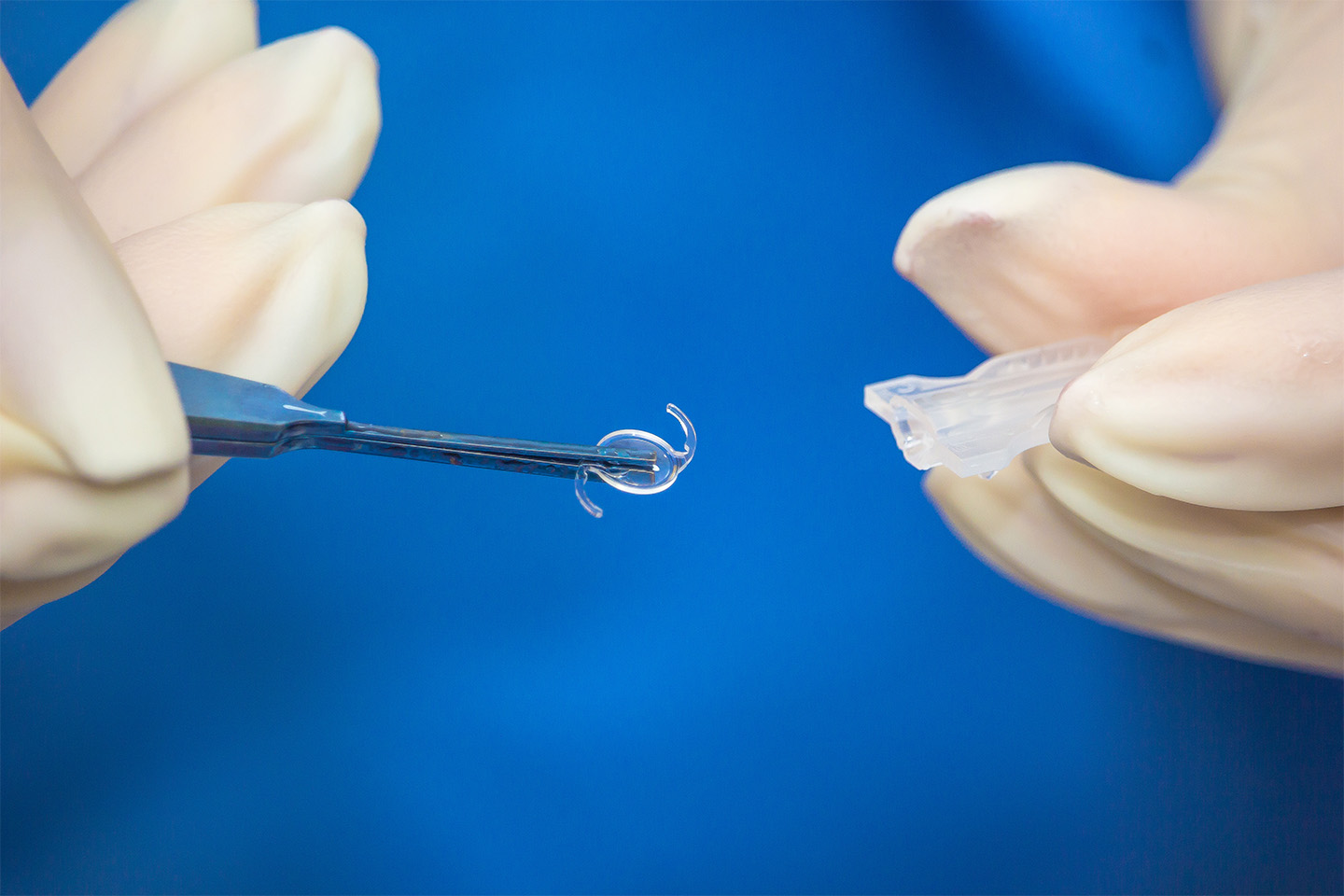At What Age do Cataracts Form?

Retirement is great, isn’t it? Plenty of time to do things like grocery shop with leisure. Except when you grab a loaf of bread for your favorite sandwich, turn it over to check the ingredients and nutrition facts…and Uh-oh. Suddenly a cloudiness fogs your view of the small print you were once able to read. Moving on to the next item on your list, your eyes strain to read labels the same way. This can be cataracts getting in the way of your once 20/20 vision.
So now you’re wondering how cataracts start. Most age-related cataracts develop over the course of time. The lens in your eye is primarily made up of water and protein. Arranged in a precise pattern, the protein keeps the lens clear and allows light to pass through it. However, as we age, some of the protein may clump together and begin to cloud an area of the lens. This clouding is a cataract.
At What Age Do Cataracts Form?
Cataracts are age-related (in most cases) and can arrive as early as in your 40s and 50s but usually without negatively affecting vision. Vision tends to further weaken with age and distinguishing symptoms of naturally aging eyes from the beginning signs of cataract formation can be difficult. Look for signs right around age 55, when cataracts can be a real problem. It’s important to detect them early by having regular eye exams to minimize vision loss.
A cataract is a clouding of the natural lens inside your eye, causing vision to blur. The lens is located behind the iris and works like the lens of a camera. When the lens is compromised, and traditional contacts or glasses are unable to correct your vision, cataract surgery is the necessary treatment.
Cataracts often go unnoticed until a doctor discovers them during an exam. That’s why early detection is key. Be on the watch for some of the symptoms of how cataracts start:
- Blurred, foggy vision
- Increased eye strain
- Inability to see smaller print
- More light required to read
- Problems with glare
- Color sensitivity; some colors appear faded
- Frequent changes in prescription
- Difficulty with night driving due to glaring lights
Seek The Best Treatment
Cataract surgery is the only way to treat a cataract, by removing the old, clouded lens and replacing it with a clear, artificial one. First, a comprehensive refractive eye exam is necessary to measure the impact of vision loss from cataracts. Cataract procedures include using a process called phacoemulsification, a technique that allows our expert surgeons to remove the cataract through a microscopic incision; there is no need for irritating stitches and unsightly patches so your eyes can heal naturally and quickly. Your eyes are resilient and vision is vastly improved after surgery. Many patients return to regular activities the day after surgery.
What You Gain From Laser Cataract Surgery at Kleiman Evangelista Eye Centers
- Clarity—“I can see clearly now the fog is gone.” Often, patients are able to see clearly again without total dependence on glasses or contacts.
- Customization—With the technological strides made in laser technology, our KE surgeons create a “road map” of your eyes to create a precise, personalized procedure.
- Confidence—You can count on our highly skilled surgeons who have performed thousands of laser cataract surgery procedures. Your comfort and safety is our top priority. You can have the confidence once again to handle night driving and be able to read all those tedious grocery item labels.
Trust your eyes to Kleiman Evangelista Eye Centers. For your convenience, we have KE Centers of Excellence locations throughout the Metroplex and beyond: Dallas, Arlington, Plano, Mount Pleasant, Gun Barrel City and Southlake (coming soon in early 2018!). Click here to schedule your cataract evaluation and set your sights on cataract surgery success!
Turn To The Top Eye Doctors In Texas
Check out one of our locations below for the best eye care near you:









